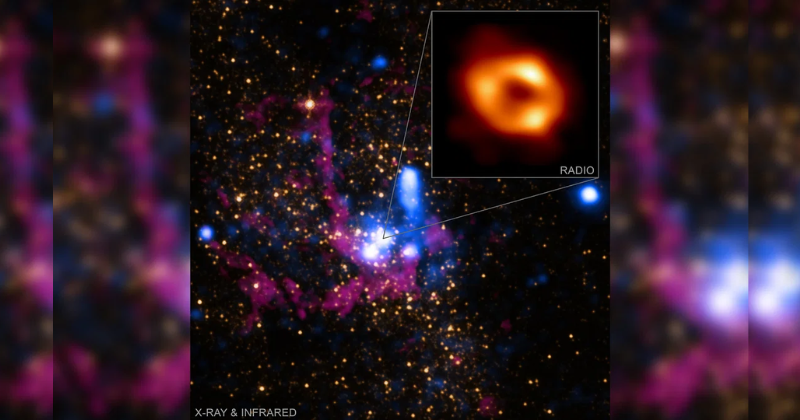The galactic centre of the Milky Way is dominated by one resident, the supermassive black hole known as Sagittarius A*.
Supermassive black holes are incredibly dense areas in the centre of galaxies with masses that can be billions of times that of the sun.
They act as intense sources of gravity which hoover up dust and gas around them.

Evidence of a black hole at the centre of our galaxy was first presented by physicist Karl Jansky in 1931, when he discovered radio waves coming from the region.
Pre-eminent yet invisible, Sgr A* has the mass equivalent to some four million suns.

At just 26,000 light years from Earth, Sgr A* is one of very few black holes in the universe where we can actually witness the flow of matter nearby.
Less than one per cent of the material initially within the black hole’s gravitational influence reaches the event horizon, or point of no return, because much of it is ejected.
Consequently, the X-ray emission from material near Sgr A* is remarkably faint, like that of most of the giant black holes in galaxies in the nearby universe.
The captured material needs to lose heat and angular momentum before being able to plunge into the black hole. The ejection of matter allows this loss to occur.
Please follow the below links for previous chapters :-
Chapter 1 - Revealing the secrets of Black Hole
Chapter 2 - Observational history of Black Holes
Chapter 3 - If falling into a Black Hole
Chapter 4 - Death by spaghettification of Black Hole
Chapter 5 - Mystery of Monster Black Holes
Chapter 6 - Crossing a wormhole : Reality Or Science fiction
Chapter 7 - Unveiling the Secrets of Biggest Black Hole
Chapter 8 - Gravity Grasp - Exploring Time Dilation Near Black Holes
Chapter 9 - Formation and Evolution of Black Hole
Chapter 10 - Origin of Universe – An Overview of Big Bang
Chapter 11 - The beginning to the end of the universe : How black holes die
Chapter 12 - Are Aliens Living On Planets Inside Black Hole?